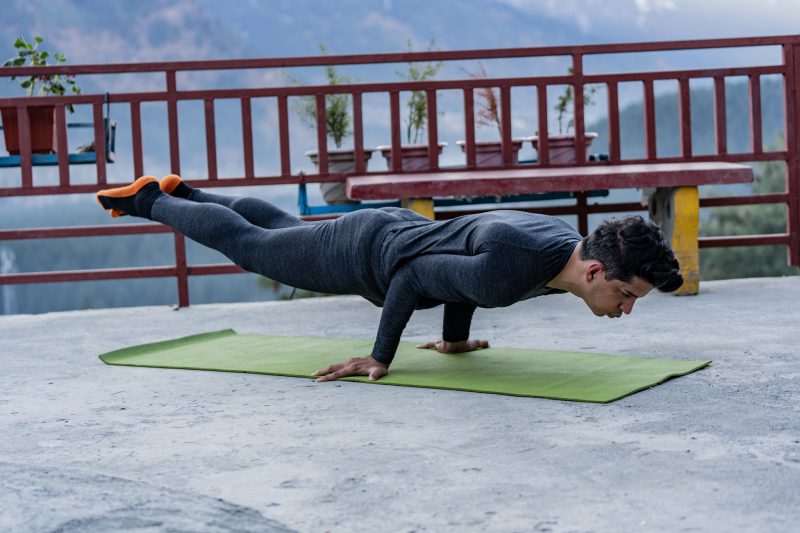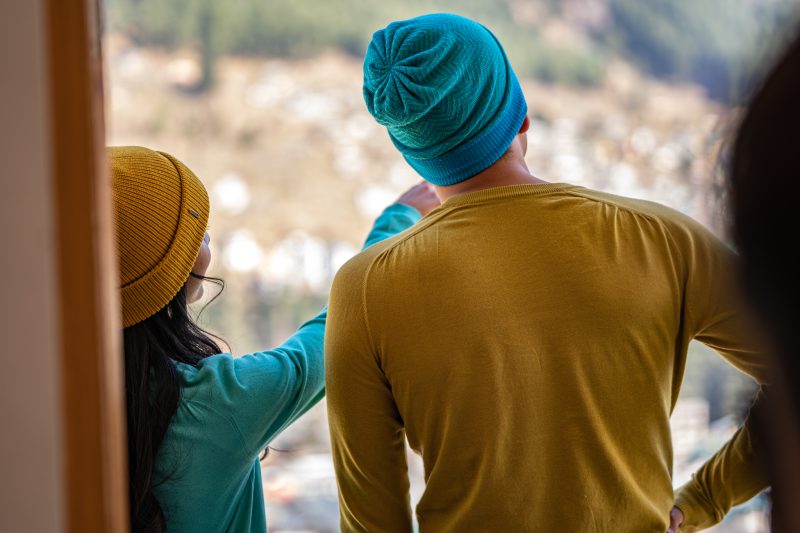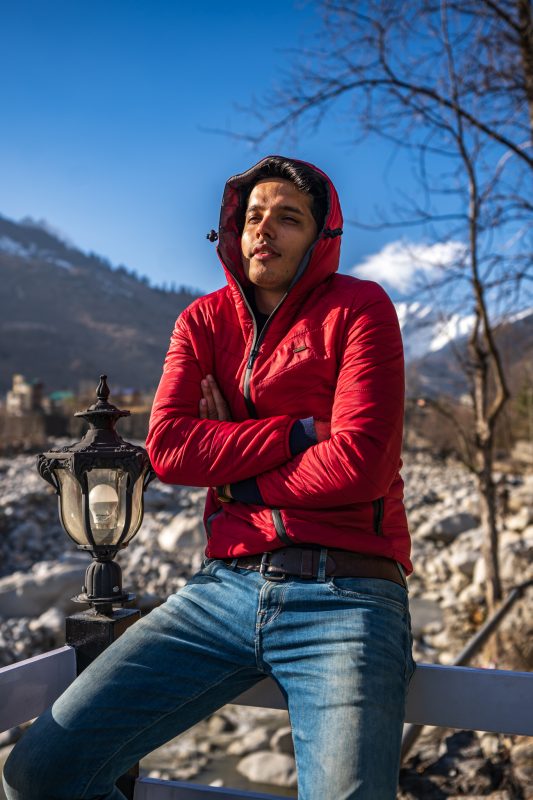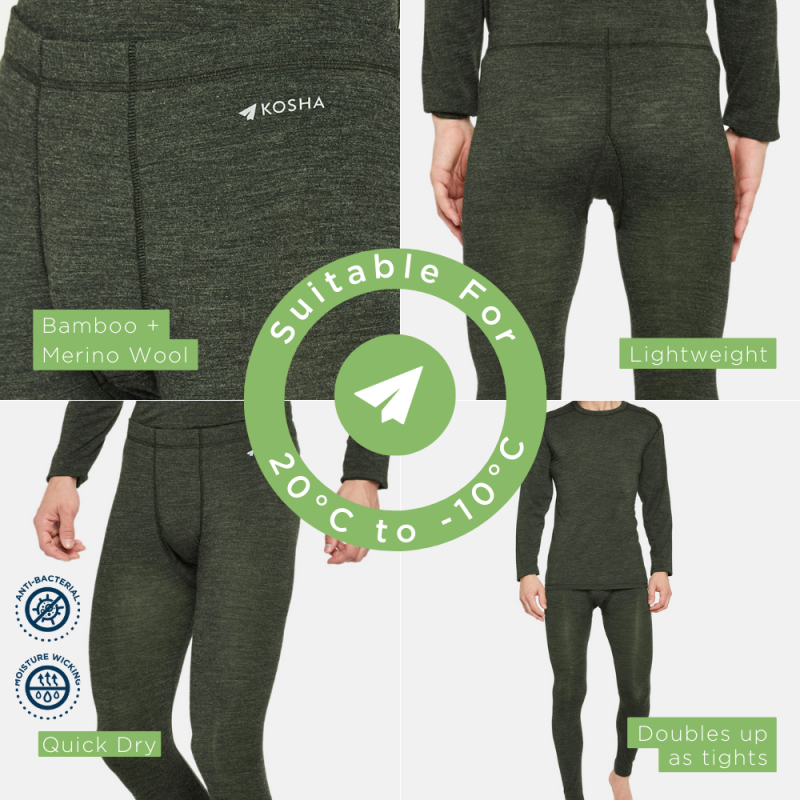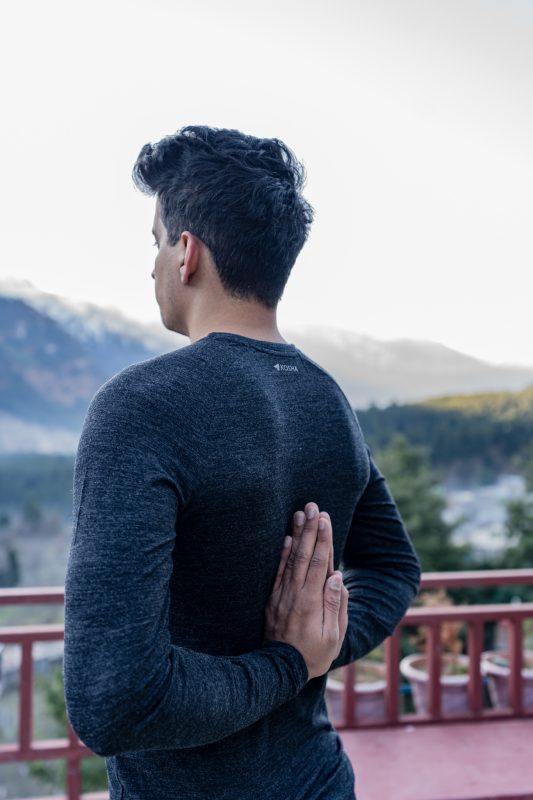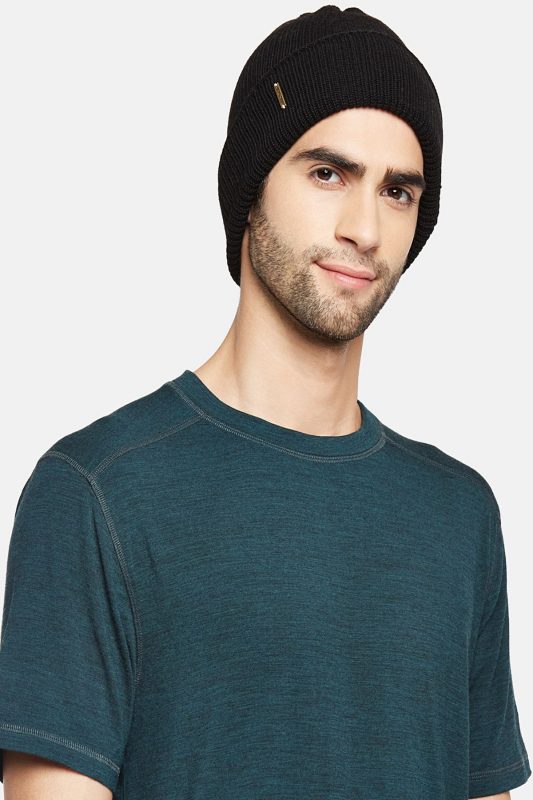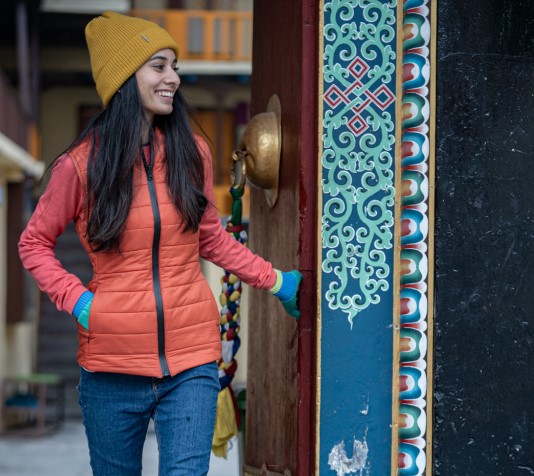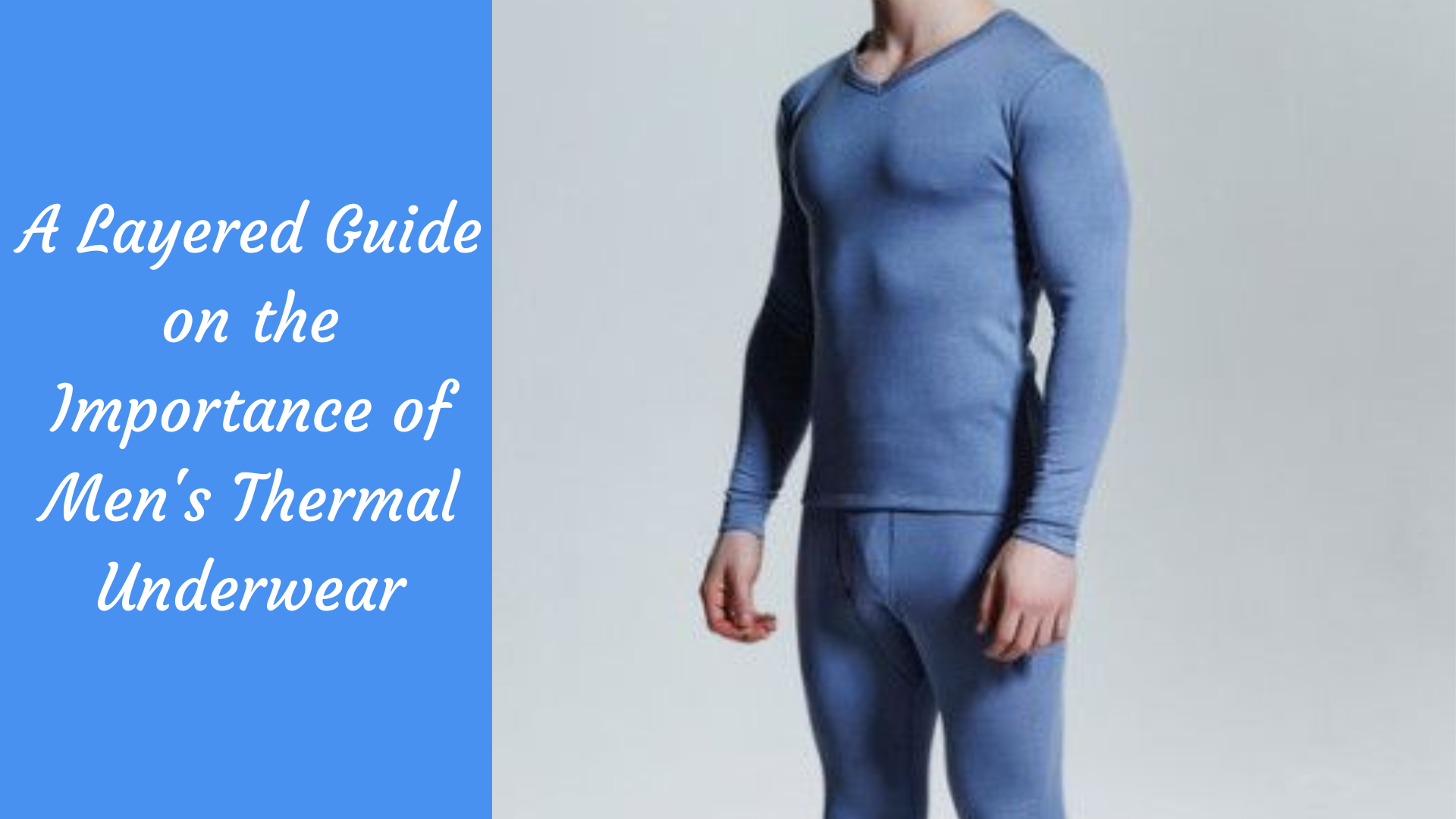
Imagine it’s a frosty morning, and the icy breeze is nipping at your nose. You’ve got places to go and adventures to embark on, but you don’t want to feel like a shivering icicle along the way. That’s where thermals for men come to the rescue! These cozy wonders have revolutionized the way we combat the cold, offering more than just warmth—they’re your secret weapon for staying snug and looking cool.
But here’s the thing, my friend. Simply throwing on a pair of thermal bottoms and calling it a day won’t cut it. Oh no, we’re about to take layering to a whole new level. You see, layering isn’t just a fancy fashion term. It’s a game-changing technique that can transform your winter wardrobe into a powerhouse of comfort and functionality.
So, grab a cup of hot cocoa, cozy up, and get ready to uncover the secrets of maximizing the benefits of men’s thermal underwear through layering. We’re going to break it down for you conversationally and engagingly because, hey, learning doesn’t have to be boring!
Throughout this article, we’ll spill the beans on the best fabrics to keep you toasty as your base layer, reveal the key to selecting the perfect mid-layer garments, and emphasize the importance of that outer layer shield. We’ll also sprinkle in some practical tips for layering like a pro, whether you’re hitting the slopes, exploring the great outdoors, or simply navigating the urban winter wonderland.
So, buckle up, winter warriors, because it’s time to unlock the full potential of your thermals for men and embrace the magic of layering! Let’s jump right into this cozy journey together.
You might get confused when you hear the word underwear with thermals. Now you might feel like asking, “Why is it called underwear?”
Table of Contents
What is Thermal Wear?
Thermal wear is a specialized type of clothing designed to combat the chill of colder climates and provide essential insulation for the body. Whether you’re braving the frigid winds of winter, embarking on a snow-filled adventure, or simply seeking comfort during chilly days, thermal wear stands as a dependable shield against the biting cold.
Unlike regular clothing, which primarily focuses on style, thermal wear is engineered with a singular purpose: to keep the body warm by trapping and conserving body heat.
What is Thermal Underwear?
Think of thermal underwear as your ultimate weapon against the cold. It’s that trusty first layer of clothing that you slip on before anything else. You know, the one that snuggles up beneath all the other layers. That’s why it’s called “underwear” – it’s the unsung hero that keeps you cozy when temperatures drop.
But what makes thermal underwear so special? Well, its main job is to keep you warm when the mercury takes a nosedive. How does it do that? By trapping your precious body heat and providing insulation like a warm and fuzzy shield.
Now, let’s talk materials. Thermal clothing comes in a variety of fabrics, from good old wool to comfy cotton and even luxurious silk. You can choose loose-fitting thermals or go for a more fitted style, depending on your personal preference and needs.
But wait, there’s more! Men’s thermal underwear brings a whole bunch of benefits to the table. And guess what? We’re going to explore all those benefits and more as we journey through this blog post together.
So, buckle up and get ready as I guide you through the essentials of thermals for men. We’ve got a lot to cover, so let’s dive right in and uncover the secrets of staying warm and cozy in style.
The importance of thermal underwear in cold weather
Thermal underwear is designed to create a thermal barrier between your body and the cold environment. Its snug fit and advanced materials work in unison to trap the body’s natural heat, preventing it from escaping into the chilly air. This insulation helps maintain a consistent and comfortable body temperature, reducing the risk of hypothermia and cold-related health issues.
Cold weather often brings with it a higher likelihood of perspiration due to activities or changes in temperature. Moisture-wicking thermal underwear helps manage sweat by drawing it away from the skin, keeping you dry. This not only enhances comfort but also reduces the risk of feeling cold and clammy due to damp clothing.
By wicking moisture away from the skin and providing efficient insulation, thermal underwear creates a buffer that prevents the cold from reaching your body. This layering approach allows you to regulate your body temperature by adding or removing outer layers as needed.
The Layering System
Kosha’s thermal wear collection
It is a winter essential, but why so? What’s so valuable about this piece of clothing?
Let’s find out.
“Thermal Clothing” has been a part of the winter lingo for a while. The term “Thermal” is used for clothing close to your skin. It will help to keep you warm in cool weather.
The basic properties of those clothing depend on their thickness, air permeability, and moisture-wicking properties.
There are some vital elements under the umbrella of thermal wear. Let’s see how they work.
The Inner Layer
The inner layer of thermal wear is a foundational component that rests directly against your skin. This layer is responsible for managing moisture, regulating body temperature, and providing a comfortable base for additional clothing layers.
The inner layer of thermal wear serves as the base layer in a layering system. It’s the first layer you put on and forms the foundation upon which you add additional insulating and outer layers. This layering strategy allows you to adjust your clothing to match the temperature and your activity level.
In summary, the inner layer of thermal wear plays a vital role in managing moisture, providing thermal insulation, and creating a comfortable base for cold weather clothing.
The Middle Layer
The garment’s ability to insulate is a result of its thickness and ability to trap air. The middle layer is ideal for providing you with some insulation. It should consist of multiple layers instead of one thick layer.
The middle layer should also allow moisture to wick away from the body. Wearing multiple middle layers will help in responding to various activity levels.
The Outer Layer
The outer layer of thermal wear is the final layer of clothing that shields you from the elements in cold weather conditions. It provides protection against wind, rain, snow, and other environmental factors, while also contributing to overall warmth and comfort.
The outer layer of thermal wear serves as the ultimate barrier between your body and the cold environment. It offers protection against wind, moisture, and other elements while contributing to warmth, breathability, and overall comfort.
The choice of outer layer should align with the specific weather conditions and activities you’ll be engaging in, ensuring that you remain well-prepared and comfortable in cold weather scenarios.
How to do Effective Layering
Basic principles of layering for cold weather
- Base Layer (Thermal Underwear): Start with a moisture-wicking base layer, like thermal underwear. This layer should fit snugly and be made of materials that keep sweat away from your skin.
- Insulating Layer: The middle layer adds insulation to trap body heat. This can be a fleece jacket, down vest, or any material that provides warmth while allowing moisture to pass through.
- Outer Layer (Shell): The outermost layer offers protection from wind, rain, and snow. It should be breathable yet windproof and possibly water-resistant, depending on the conditions.
- Adjustability: The key to effective layering is the ability to add or remove layers as needed. This allows you to regulate your body temperature based on your activity level and the weather.
- Breathability: Each layer should allow moisture to escape, preventing sweat from accumulating and making you feel cold and damp.
- Accessorize: Don’t forget accessories like hats, gloves, scarves, and socks. These small items can make a big difference in maintaining warmth.
The role of thermal underwear in layering systems
Thermal underwear, often the base layer, plays a crucial role in effective layering for cold weather:
- Moisture Management: Thermal underwear’s moisture-wicking properties keep sweat away from your skin, preventing you from feeling cold and damp. This is vital for maintaining warmth and comfort.
- Insulation: The snug fit of thermal underwear helps trap warm air close to your body, enhancing overall insulation and preventing heat loss.
- Comfort and Mobility: A well-fitting base layer allows for unrestricted movement and serves as a comfortable foundation for additional layers.
- Regulation of Temperature: Thermal underwear acts as a foundation for regulating your body temperature. As you add or remove layers, the base layer maintains a stable core temperature.
Factors to consider when choosing Men’s Thermal Underwear?
You must look into a few things to pick suitable thermals for men. It will help you in making informed decisions.
So let’s take a look.
There is a lot to consider when purchasing thermal clothing for men. The type of clothing you select, the insulation level, how you plan to use the clothing and your body composition must be considered.
Choosing the base layer according to weather conditions
Choosing the right base layer according to weather conditions is essential for maintaining comfort and warmth. Base layers are the foundation of effective layering in various climates.
The insulation level is one of the most important factors to consider when purchasing thermal clothing. Clothing with high insulation levels will keep you warm while keeping your body cool.
For colder weather conditions, you may want to consider selecting thermal clothing with an additional layer of insulation. For cool but not freezing conditions, opt for a lightweight base layer made of moisture-wicking materials like synthetic blends or lightweight merino wool. These will keep you dry and provide a basic level of insulation. Additionally, ensure the clothing is durable so it will last through multiple uses.
In extreme cold or during high-intensity winter activities, a heavyweight base layer is necessary. Look for advanced thermal materials or heavyweight merino wool for maximum warmth.
Adapting layers to various outdoor activities (hiking, skiing, camping, etc.)
Adapting layers to different outdoor activities is crucial for staying comfortable and safe in varying conditions. Each activity demands specific levels of insulation, mobility, and moisture management.
Depending on the weather, a midweight or lightweight fleece jacket can provide additional warmth during breaks or cooler moments. A windproof, and water-resistant shell jacket is perfect for protection against wind and light rain. Make sure it’s breathable.
Your activity level, personal comfort, and the specific conditions you’ll encounter will influence your layering choices. The key is to have the ability to add or remove layers as needed to stay comfortable, dry, and warm while engaging in different outdoor activities.
Choosing the right size
When using thermal clothing, it is essential to be aware of your body composition. Different types of thermal clothing are designed for different body types.
If you are thin or have a light build, select thermal clothing with a low insulation level. If you are heavier or have a thicker build, select thermal clothing with higher insulation.
Overall, there are a lot of factors to consider when purchasing thermals for men. Choose the best option that suits your needs and keep all the points mentioned above in mind.
Best Fabrics for Men’s Thermal Underwear

Like other winter clothing, fabrics are essential here too. When discussing thermal clothing, we must pay careful attention to some things. It’s built in a way that lets it act as a second skin for you. Some ideal fabrics would satisfy winter in this regard.
So, let’s check why those fabrics are valuable for men’s thermal underwear.
1. Synthetic Fabric
Synthetic material is ideal for fighting the extreme conditions of the winter season. This fabric is designed with combinations of many types of materials.
These materials include polyester, lycra, spandex, and nylon as well. This material also has a variety of natural fibers as well.
If you combine the fibers well, synthetic material ensures proper heat retention and moisture-wicking.
2. Merino Wool Fabric
It’s a popular type of wool. It comes from the Merino sheep breed. It’s great for most winter clothing. Also, it’s one of the most reliable materials in the thermals category. Natural merino wool always provides maximum comfort to its wearers.
It seamlessly balances moisture management and body heat protection as well. This material will help you fight o degree Celsius temperature as well.
But you can carry it along for moderate winter temperatures too. Either way, wool is always trustworthy when we talk of cold climates.
3. Silk Fabric
You can opt for silky thermals if you want a lightweight option. But, the texture of the fabric takes the shape of your body with ease. The thermals of this material comfortably indulge in lounging and sports activities.
But, this material isn’t too capable of handling intense weather. It also lags behind as far as moisture-wicking is concerned.
4. Cotton Fabric
Cotton thermal clothing can’t handle moisture well. So, your clothes might feel wet, chilled, and clammy. That said, they’re an affordable option if you wish to buy them.
But, you shouldn’t have high expectations from this fabric for men’s thermal underwear. It’s not as good as some other fabrics in that regard.
So, these are some of your options for the right fabric. Now, you can look for the right thermals.
Thermal Accessories to Complete Your Winter Look
Woolen caps collection for men
Accessories are always lovely to have for most outfits. But, when it comes to winter wear, thermals for men are a necessary but the accessories are quite important too. It allows you to get enough warmth in the winter warmth.
Let’s see some essential winter accessories that work well with thermal clothing.
1. Scarves Along With Thermals
A scarf is a quintessential winter accessory. It can give your head, neck, and ears extra warmth. Also, since thermals are worn in extreme conditions, you might need them at any time.
If you feel that the combo is plain, wear a patterned scarf. It will look nice on you. It’s always good to keep a patterned scarf in your winter collection for the season. Check out the men’s mufflers here.
2. Woolen Gloves
These are other forms of winter essentials that can fit with winter thermals. It will keep your hands warm and safe. But it will complement your thermals.
If you like the color of everything you wear, choose the right colors. You can use them for regular use if needed. Check out the men’s woolen gloves here.
3. Beanies
Beanies are another nice inclusion in this list of accessories. Your head will stay warm while the thermals protect your body and bottoms.
4. Mittens
This winter handwear is a bit different from gloves. Both of them keep your hands warm. But there’s a difference regarding the make. Mittens fit your thumbs in one opening while the other fingers together in another one.
They’ll help in extreme conditions. That’s when your hands will need protection. They’re a good alternative to gloves.
So, accessories work perfectly well with thermals for men. In this way, other body parts will also get some warmth. It’s always a bonus to have those extra layers of warmth in hand.
They also come in several colors and designs. So you won’t need to stress about it looking simple or monotonous.
Timing Matters: Decoding the Best Moments to Rock Men’s Thermal Underwear
Now that we know the basics of thermal wear, let’s move on to another sub-topic.
Where would you wear these thermals you chose to buy? Well, you can wear them at a few places. Let’s see where all.
1. Wear Thermals in The Morning
Check the indoor temperatures when you wake up in the morning. Is the temperature lower than 18 degrees C? If yes, you should wear your thermals under a daily outfit.
2. Wear Thermals in The Night
Thermals alone aren’t meant for the outdoors. Have a look at the temperature back home as well. If the indoor temperature reads below 18 degrees C, wear them while you’re at home.
3. Wear Thermals When You’re Out
Is the temperature outside lower than 18 degrees C? In that case, wear your thermals if you want to move out on the streets. You can wear this under your other clothes.
That said, when you feel itchy, hot, or sweaty, take off one of the multiple layers you might be wearing.
Why is Moisture-Wicking Important?
Have you heard of this term before? Well, it’s an essential part of any winter wear. The purpose of wearing thermal underwear is to stay warm. For this to happen, you have to stay dry too.
Has your body started heating up? Don’t worry. It will try to regulate the temperature through perspiration.
Under normal circumstances, this is ideal as you perspire. Evaporation will help in pulling heat from the skin’s surface. In turn, this will allow it to cool down. But, this could also be a problem in one scenario.
If the fabric of your clothes isn’t equipped to deal with such weather, you’ll have a tough time. Hence, as mentioned, pay careful attention to the outfit’s fabric.
If there’s too much moisture on your clothes, it’s a problem. Your clothes will begin to get wet.
Do you want to know how the ideal thermals for men functions? It removes the moisture, transferring it from the base layer to the mid-layer.
If you want good results, choose wool or synthetic fabric. As mentioned, cotton won’t be a good choice. The best choice would be Merino wool. It is moisture-wicking and lightweight as well. So, it would be provide with the most comfortable choice.
Top 4 Mistakes to Avoid with Layering Thermal
Layering is a key topic when we speak of thermals. So, you know the things that won’t work with winter layers. But it’s human to make mistakes.
It’s all about knowing what shouldn’t be done. It will help you to be aware whenever you use thermals or other winter layers.
So, let’s have a look at these common mistakes.
1. The Urge to Look Fashionable
Yes, winter clothing can look stunning on you. They have the best options for you to select. But, that shouldn’t be first on your list of priorities.
Warmth and comfort are equally essential. It’s because everything you wear should be able to handle the temperatures. When dressing for a winter day outdoors, you may ignore the function and look for fashion instead. It could lead to hypothermia or frostbite.
Choose clothing in a style and color you love. But, ensure that those clothes let you survive in the weather.
2. Choosing the Wrong Fabrics
It looks like you’ve decided what to wear this winter. But are you wearing clothing with suitable fabrics?
If we’re discussing socks, wear wool instead of cotton. For effective layering, wear good quality winter thermals made from merino wool or synthetic materials. The reasons have been explained above.
3. Too Few or Too Many Layers
Knowing how to layer effectively is crucial. You may opt for too few or too many at times. It’s not your fault. It’s a common mistake people make. The number of layers on you decides how safe you are for the temperatures outside. You must prepare yourselves well. Once you’re out in the open, you can’t run back home always.
Another aspect is layering in excess. If you combine this with intense physical activity, it can cause loads of sweating. It renders your base layer ineffective.
If you’re overheating, you must remove the topmost layer to regulate your body temperature.
4. Ignoring Accessories
As you’ve seen, accessories can be pretty valuable with thermals. When dressing for winter weather, don’t forget about winter accessories! Your hands, feet, neck, and head all need to stay warm too.
Winter accessories aren’t expensive, and they’ll help to keep your whole body warm and dry throughout your time outside.
You must try to avoid these common winter layering mistakes. If you do so, you’ll be set to have fun in the snow while staying warm and dry.
Maintenance and Care of Thermal Underwear
Proper maintenance and care of thermal underwear are essential to ensure their longevity, maintain their insulation properties, and keep them functioning effectively. There are certain things one must keep in mind when washing the thermals for men as well as women.
Washing and drying guidelines to maintain insulation properties
- Check Care Labels: Always follow the care instructions on the garment’s care label. Different fabrics and blends may have specific washing requirements.
- Machine Wash on Gentle Cycle: Most thermal underwear can be machine washed. Use a gentle cycle with cold water to prevent damage to the fabric and maintain its insulation properties.
- Use Mild Detergent: Use a mild, non-bleach detergent that’s suitable for delicate fabrics. Avoid using fabric softeners as they can reduce the moisture-wicking capabilities of the fabric.
- Wash Separately: Wash thermal underwear separately from heavier or abrasive fabrics that could cause pilling or damage.
- Air Drying: Whenever possible, air dry your thermal underwear. Hang them in a well-ventilated area, away from direct sunlight and heat sources.
- Low Heat in Dryer: If using a dryer, choose the lowest heat setting. High heat can damage the fabric and affect insulation properties.
Storage tips to prolong the lifespan of thermal garments
- Clean and Dry: Before storing, make sure your thermal underwear is clean and completely dry. Moisture can lead to mildew and odors over time.
- Fold, Don’t Hang: Fold your thermal garments instead of hanging them to prevent stretching or misshaping.
- Use Storage Bags: If possible, store your thermal underwear in breathable storage bags to protect them from dust and pests while allowing air circulation.
- Avoid Direct Sunlight: Store thermal garments away from direct sunlight and extreme temperature fluctuations, as they can degrade the fabric over time.
Conclusion
Mastering the art of layering techniques and understanding the benefits of thermals for men has been an eye-opening journey. We’ve learned that layering is not just about staying warm; it’s about embracing comfort, style, and functionality in any cold-weather situation. From selecting the right base layer to choosing the perfect mid-layer and outer layer, we now have the tools to conquer any winter adventure with confidence. And for those looking to invest in high-quality, eco-friendly, and sustainable thermals for men, Kosha offers a range of options that prioritize both style and sustainability.
FAQs
Here are some frequently asked questions about thermals for men. So, if you also have some questions keep scrolling.
What to look for when buying thermals for men?
Most likely, the most important factor in base layers is the material type. Moisture-wicking materials like merino wool, polyester, and elastane are typically your best options because they are made to be worn next to the skin and are frequently used for winter sports.
How do I know if my thermal underwear is good?
Your body should be able to stay warm using thermal clothing. However, it should also be bacterial-resistant and flexible. Additionally, the fabric ought to have the ability to offer sweat-wicking qualities. The efficiency of thermals is determined by a combination of these characteristics.
How should thermal underwear be worn?
Thermal underwear, often referred to as long underwear is a pair of thin, elastic trousers that resemble a pair of leggings and are typically worn under other items of clothing, such as your hiking or skiing pants, to add an additional layer of insulation while participating in outdoor activities. It is the first layer of thermal wear on your body to provide you with heat.
How often to wash thermal underwear?
Avoid overwashing this clothing because it will stay newer and longer because one sweats considerably less in the cold. It may be worn for three to five days without washing thanks to its built-in odor resistance and moisture-wicking capabilities. The thermals can be hand washed with any light liquid detergent.
Do thermals for men need to be skin tight?
To wick moisture and retain heat, thermals for men must be worn close to the skin: Select a size that fits snugly (but not too tightly) for maximum warmth and dryness. If they are too loose, then they won’t function as intended. They ought to be tighter than a T-shirt but comfortable at the same time.
So, don’t hesitate to take the next step towards warmth and sustainability by exploring Kosha’s collection of eco-friendly and sustainable men’s thermals. Embrace the magic of thermals for men, stay cozy, and rock your winter wardrobe with confidence. Thank you for joining us on this exciting journey, and remember to keep exploring, layering, and embracing the wonders of thermals for men. Happy layering and stay warm!
This post was written by Kosha team member – Shawn Mathias
